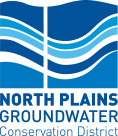GMA Regional Water Planning
Before the legislative and voter action, the responsibility for financing and developing water supply projects in Texas fell to local communities or the federal government. In response to the 1950s state-wide drought, and devastating spring floods in 1957, the Texas Legislature in special session adopted the 1957 Water Planning Act creating the Texas Water Development Board for the conservation and development of Texas’ water resources. Funding for water project loans administered by the board was approved by voters through a constitutional amendment. In 1997, Texas’ current water planning process was established by the legislature. This change in state water planning allows a bottom-up approach to prioritizing water resource development. Historically, surface water supply amounts available for current and future Texas economic growth were well estimated because surface water is owned, regulated, and measured by the state.
Unlike surface water, groundwater is a private property right and is owned by the landowner, unless the right has been separated from the surface by a deed or contract. Approximately 100 groundwater conservation districts manage groundwater through a variety of methods primarily governed by the Texas Water Code and the local district’s enabling legislation. The Texas legislature establish a framework for regional collaboration between local districts through joint planning in 2005. Joint planning requires the districts to collectively determine desired future conditions for aquifers in groundwater management areas.
A desired future condition (DFC) is the desired, quantified condition of a groundwater resource (such as water levels, spring flows, or volumes) within a management area at one or more specified future times. An outcome from the joint planning process is that groundwater availability is quantified though computer modeling based on the mutually established DFCs. The Texas Water Development Board administers joint planning in 16 Groundwater Management Areas throughout the state. Every five years, districts update a 50-year joint plan in each area. Collaboration between the districts in setting desired future conditions and quantifying available groundwater through modeling provides the information necessary to complete regional and state water resource planning for the future.
North Plains Groundwater Management District joint plans with Hemphill County Underground Water Conservation District, High Plains Underground Water District and Panhandle Groundwater Management District in Groundwater Management Area 1. The area generally is coincident with Regional Water Planning Area A.
Recently, the district in Groundwater Management Area 1 completed the joint planning cycle that will provide groundwater availability through 2080 for regional and state water planning. The districts must now update their management plans as road maps on how the districts will achieve the agreed desired future conditions. The management plans will include where necessary potential district rule changes, conservation education programs or planned collaborations to achieve the desired future goals. North Plains GCD board members Bob is the chairman of the joint planning process and Daniel Krienke joint planning in Region A planning.
